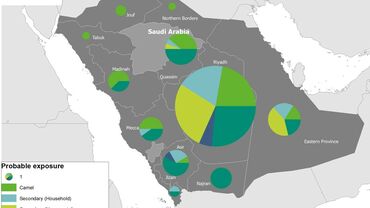Epidemiological update: Middle East respiratory syndrome coronavirus (MERS-CoV)
Since the last ECDC epidemiological update of 22 October and as of 5 November 2014, Saudi Arabia has reported 22 new cases.
Worldwide situation
As of 05 November 2014, 929 laboratory-confirmed cases of MERS-CoV have been reported to the public health authorities worldwide, including 372 deaths. Most of the cases have occurred in the Middle East – Saudi Arabia, United Arab Emirates, Qatar, Jordan, Oman, Kuwait, Egypt, Yemen, Lebanon and Iran (Table 1).
Table 1. Distribution of confirmed cases and deaths, by reporting country as of 4 November 2014
| Reporting country | Cases | Deaths | Date of onset/reporting for most recent cases |
| Middle East | |||
| Saudi Arabia | 804 | 342 | 04/11/2014 |
| United Arab Emirates | 73 | 9 | 05/07/2014 |
| Qatar | 9 | 4 | 14/10/2014 |
| Jordan | 18 | 5 | 23/05/2014 |
| Oman | 2 | 2 | 20/12/2013 |
| Kuwait | 3 | 1 | 13/02/2014 |
| Egypt | 1 | 0 | 22/04/2014 |
| Yemen | 1 | 1 | 17/03/2014 |
| Lebanon | 1 | 0 | 22/04/2014 |
| Iran | 5 | 2 | 25/06/2014 |
| Europe | |||
| Turkey | 1 | 1 | 25/09/2014 |
| Austria | 1 | 0 | 24/09/2014 |
| United Kingdom | 4 | 3 | 06/02/2013 |
| Germany | 2 | 1 | 08/03/2013 |
| France | 2 | 1 | 08/05/2013 |
| Italy | 1 | 0 | 27/05/2013 |
| Greece | 1 | 1 | 08/04/2014 |
| The Netherlands | 2 | 0 | 05/05/2014 |
| Rest of the world | |||
| Tunisia | 3 | 1 | 16/05/2013 |
| Algeria | 2 | 1 | 23/05/2014 |
| Malaysia | 1 | 1 | 09/04/2014 |
| The Philippines | 1 | 0 | 04/04/2014 |
| United States of America | 2 | 0 | 01/05/2014 |
| Total | 940 | 376 |
ERRATUM: The date of the most recent case in Lebanon has been corrected (previously 22/04/2012) to 22/04/2014. Other dates in the table have been adjusted as per available information.
Of the 716 cases where age and gender is known 46% have been male above the age of 40 years (Figure 1).
Figure 1. Distribution confirmed cases of MERS-CoV by age and gender, February 2012 – October 2014 (n=716)
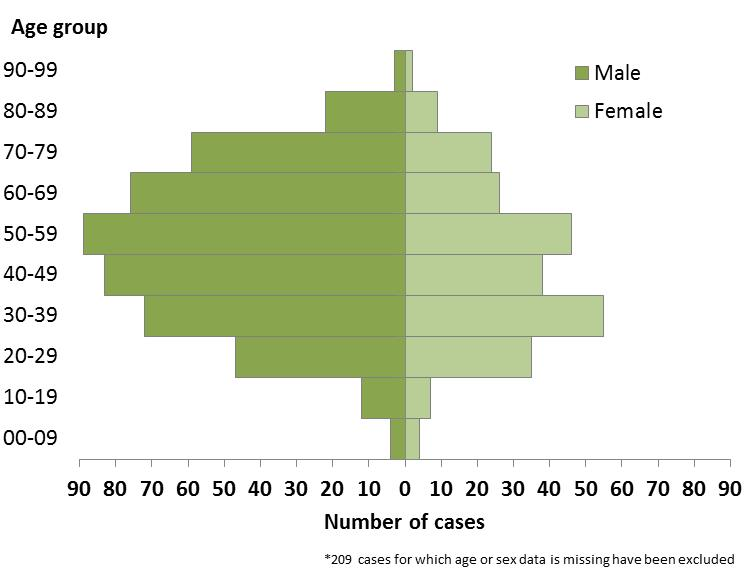
Geographical distribution
All cases reported outside of the Middle East have had a recent travel history to the Middle East or contact with a case who had travelled from the Middle East (Figure 2).
Figure 2. Geographical distribution of confirmed MERS-CoV cases by place of probable infection, worldwide, as of 5 November 2014 (n=929)
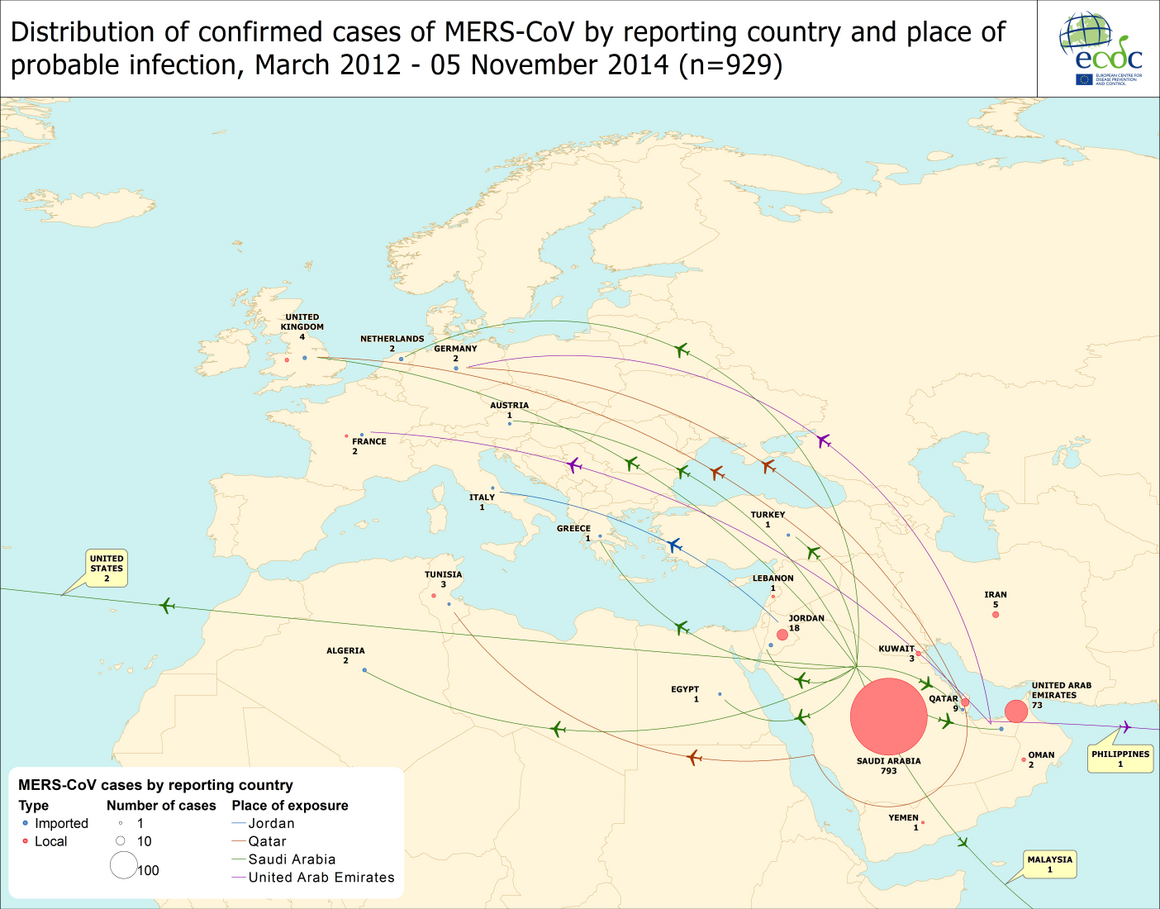
Figure 3. Distribution of confirmed cases of MERS-CoV, by date and place of probable infection, February 2012 – October 2014 (n=925*)
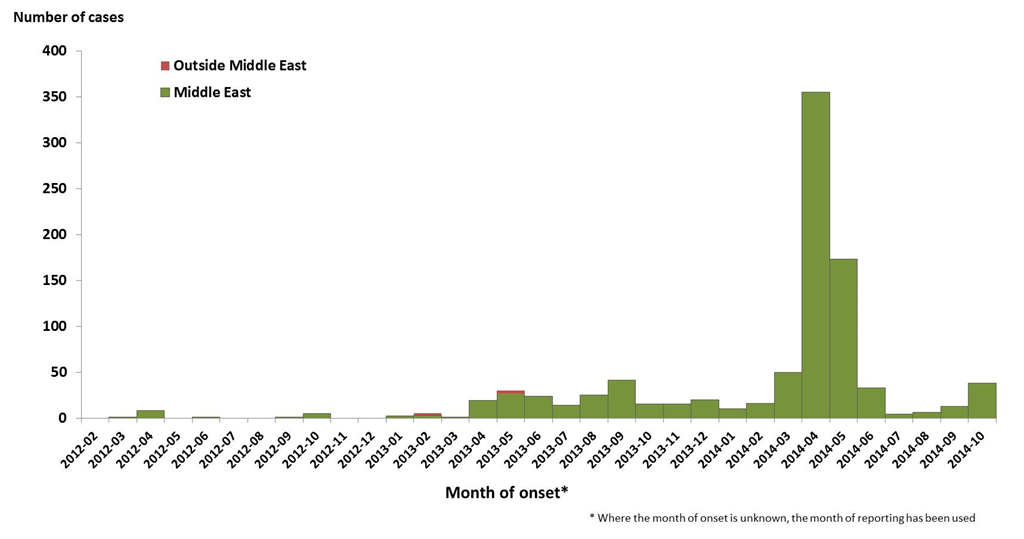
*Four cases have been reported in November and are not displayed in this graph.
Current epidemiological situation in Saudi Arabia
The distribution of cases for the period 1 August to 31 October 2014 suggests an increasing trend in particular in Saudi Arabia (Figure 3). During this time period, Saudi Arabia contributed to 53 out of 56 cases. Qatar, Austria and Turkey reported each one case with a travel history to Saudi Arabia.
Specifically for Saudi Arabia:• Of the 50 cases where age and sex is known, 41 were males (82%) (Figure 4). The median age for these cases was 60 years (ranging between 17 and 90 years)• Of the 53 cases, 39 (74%) had unspecified comorbidities reported• All cases were reported to be symptomatic• Nine of the cases were classified as healthcare workers• Six cases reportedly had recent contact with an animal. Of these, three were specified as camels and two people reported to have drank camel milk
The MoH in Saudi Arabia is updating its clinical operations protocol for MERS-CoV for handling patients who are suspected to, or have the disease. They state that 70 percent of recent MERS-CoV cases have been resulting from secondary infections, mainly acquired in the hospital.
Figure 4. Distribution of confirmed MERS-CoV cases by age and gender, Saudi Arabia, August to October 2014
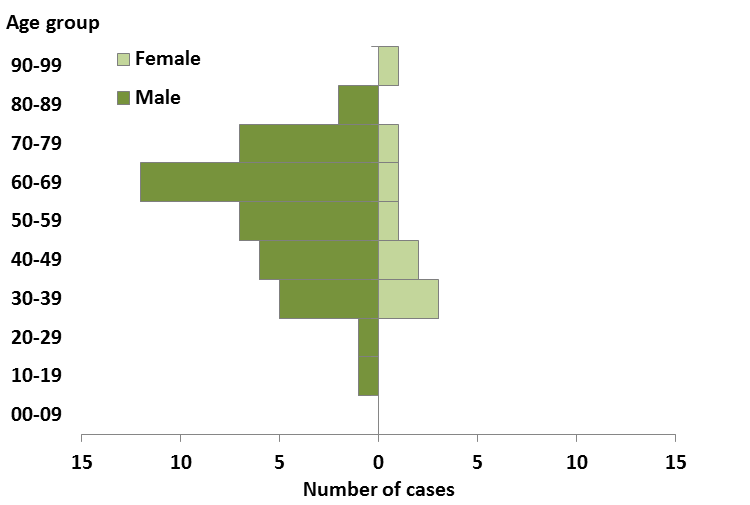
On 20 October 2014, the Ministry of Health of Saudi Arabia issued a press release regarding an evolving cluster in Taif. Between 1 August and 31 October 2014, 21 (42%) of the 50 cases with reporting city documented have occurred in Taif (Makkah region). Cases have also been reported in Riyadh (13), Jubail (4), Najran (2) Jawf (2), Alkharj (2), Wadi Al-Dawasser (1), Madinah (1), Jeddah (1), Hafr Al Batin (1), Alhenakiyah (1) and Al Ahsa (1) (Figure 5).
Figure 5. Geographical distribution of confirmed MERS-CoV cases by place of probable infection, Saudi Arabia, August – October 2014
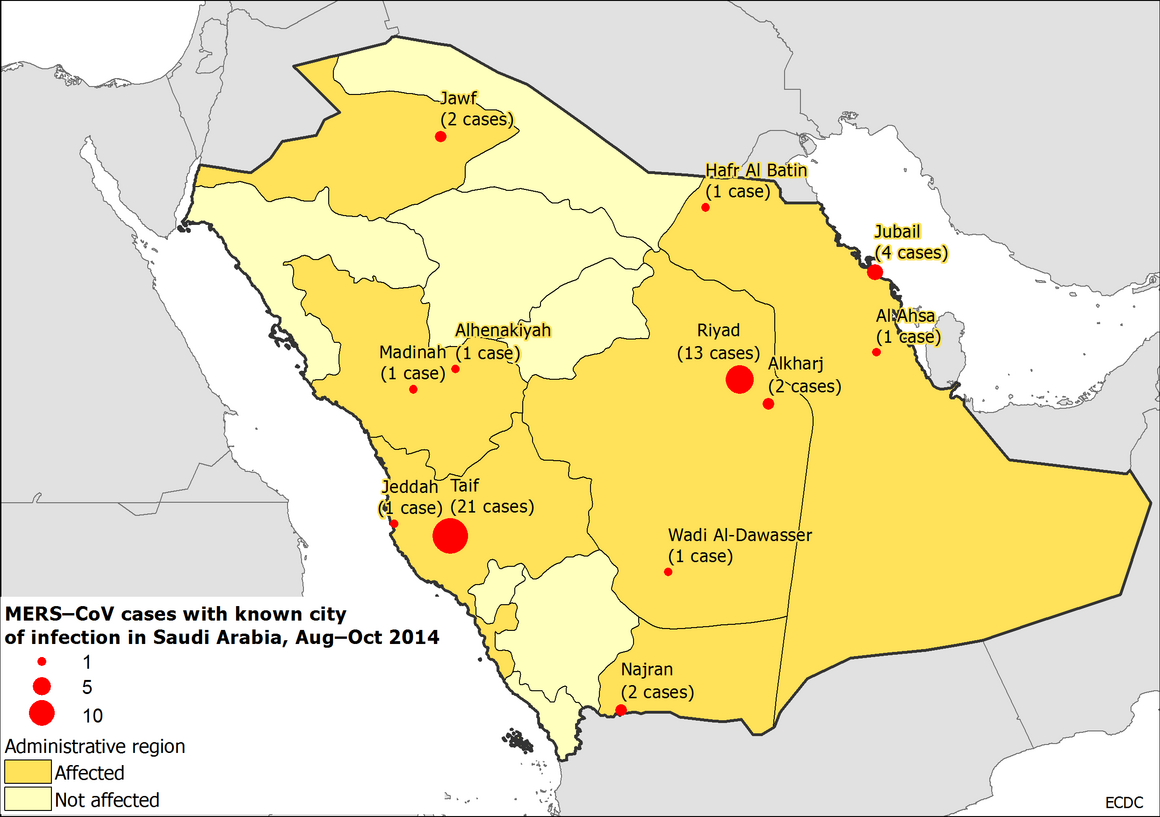
During this period, cases with travel history to Saudi Arabia were reported from Qatar, Austria and Turkey and were reported in previous ECDC epidemiological updates.
Conclusions
- The number of cases notified reflects an increasing trend in reporting cases from July to October 2014.
- As in the past, secondary transmission in hospital continues to play an amplifying role in the transmission of the disease.
- The majority of MERS-CoV cases are still being reported from the Arabian Peninsula, specifically from Saudi Arabia, and all cases have epidemiological links to the outbreak epicentre.
- The latest importation to the EU (Austria) and to Turkey are not unexpected and do not indicate a significant change in the epidemiology of the disease.
- Importation of MERS-CoV cases to the EU remains possible. However, the risk of sustained human-to-human transmission remains very low in Europe.
The conclusions and recommendations of the updated risk assessment of 16 October 2014 remain valid.





